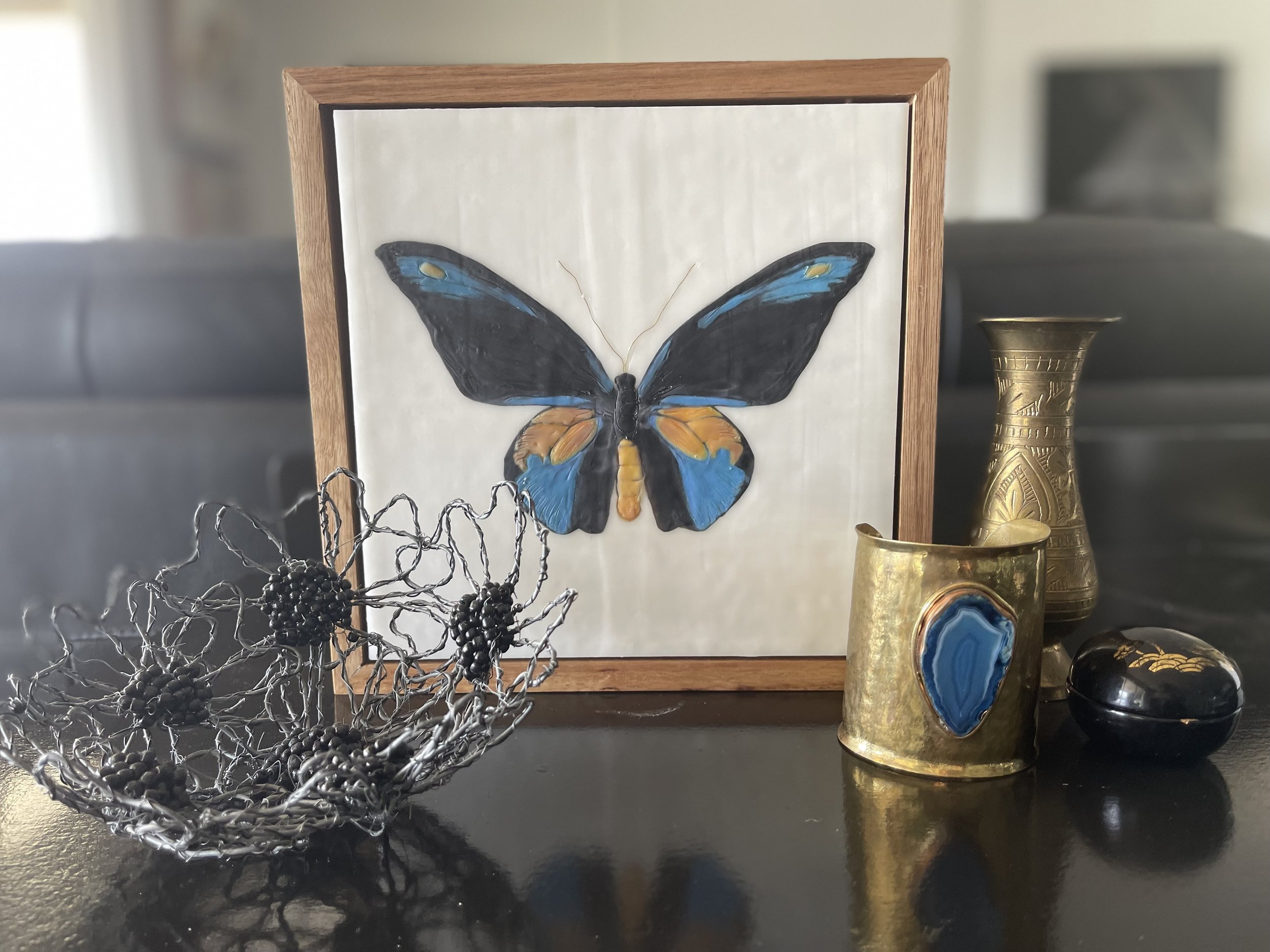How to display artwork at home
One of the most effective ways to add personality, style, and character to your home is by incorporating artwork. Whether you're a seasoned art collector or just starting to explore this form of creative expression, displaying artwork can transform your living space into a unique and visually captivating environment. In this blog, I will share some creative tips on how I display artwork in my home that you can easily do as well
1. Plan Your Gallery Wall:
Gallery walls are a great option for showcasing multiple pieces of art and objects of interest. Start by selecting a focal point, such as a large painting, and then arrange other pieces around it. Consider the overall layout and spacing between each piece, while keeping the colour scheme, theme, or style in mind. In the example below I have used black and white with amber. I love adding pieces that are unexpected. Here I have added a vintage bag, printing press letters, wire flowers and decoupage plaster hearts all expressions of me and my style.
2. Mix and Match:
Don't limit yourself to one art style or medium; mixing and matching various pieces can create a visually dynamic and eclectic display. Combine paintings, photographs, sculptures, and knick knacks, ensuring they complement one another in terms of colour palette, theme, or subject matter. The key is to find a common thread that ties everything together while allowing each piece to shine individually. Below blue, black and metallics tie this vignette together. Don’t be scared to use unusual pieces like the cuff.
3. Consider Different Display Techniques:
Think beyond conventional framing when it comes to presenting your artwork. Consider floating frames, shadow boxes, or transparent acrylic stands to add a unique touch to your display. For unframed artwork, using gallery-quality clips or floating shelves can offer a modern and minimalist look. Be open to experimentation, as the right display technique can elevate the overall impact of your art.
4. Transform Unexpected Spaces:
Art can be displayed in various areas of your home, not just the walls. Utilize unexpected spaces like bookshelves, mantels, or even the back of doors to showcase smaller pieces or create a curated vignette. Incorporate art into multi-functional areas such as the kitchen, bathroom, or home office to infuse a touch of creativity into these spaces.
Artwork displayed in a bookcase.
5. Scale Matters:
Consider the size and scale of your art in relation to the surrounding furniture, walls, or architectural features. A large statement piece can anchor a room and become a focal point, while a series of smaller artworks can add visual interest to a narrow hallway or staircase. Be mindful of proportion and aim for a harmonious balance between the art and its surroundings.
Trio of small artworks utilising a small space.
6. Rotate and Refresh:
Artwork doesn't have to remain in the same spot forever. Change things up by rotating the pieces on display periodically. You can change the whole look of a room by moving a few key pieces then accessorising around them. Not only does this prevent visual fatigue, but it also can bring new life to your home. As a working artist, art comes and goes continuously. I invested in a hanging system years ago and it was one of the best things I ever did. If you have substantial collection that you like to change around, investing in a system is cheaper than filling in holes and repainting your walls. I use a hanging system from Shakespeare Solutions
The hanging system I use.
Displaying artwork is an art form in itself. By carefully curating and positioning your pieces, you can transform your living spaces into stunning galleries that reflect your unique style and taste. Remember to stay open to experimentation, play with different display techniques. Enjoy the process and let your creativity shine through with every piece you display. But remember this is just a guide, the whole idea of having art in your home is to express who you are. So in the end don’t worry to much about what others like, do what you love.







